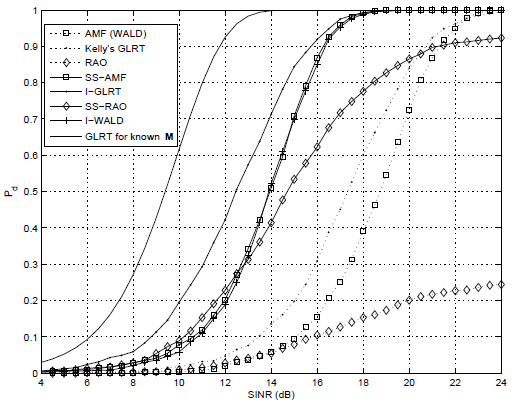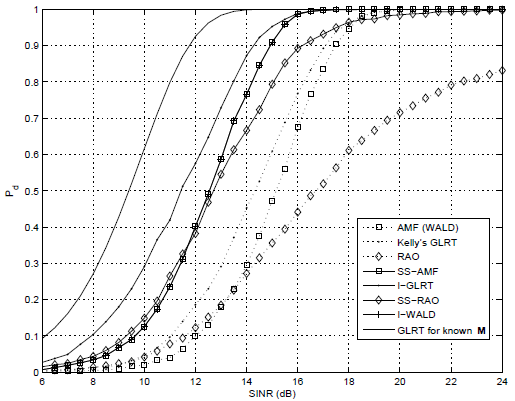In the last years, radar community undertook different routes towards the design of adaptive detection schemes. The most common design criteria such as the generalized likelihood ratio test, the Rao test and the Wald test have been exploited in conjunction with specific conditions on the interference affecting the target echoes, usually arising in some operating scenarios.
For these detectors, a set of secondary data is assumed to be available to estimate the interference covariance matrix. However, secondary data are often contaminated by power variations over range and other outliers, which drastically reduce number of homogeneous secondary data. Hence, it causes severe performance degradations for these detectors.
Following the guideline, lately, Italian and Chinese researchers work together to have addressed adaptive radar detection of targets embedded in ground clutter dominated environments, characterized by a symmetrically structured power spectral density. This research aims to achieve improved detection performances in training-limited scenarios.
The performance analysis, both on simulated and on real radar data, confirms the superiority of the considered architectures over their conventional counterparts which do not take advantage of the clutter spectral symmetry.
Researchers have devised four different decision schemes which take advantage of some spectral properties of the clutter usually arising in a ground clutter environment.
At the design stage, it is assumed that the interference Power Spectral Density is real and even. This seemingly minor feature reduces the number of unknowns, and allows to recast the problem at hand in terms of statistically independent and real quantities that can be suitably exploited for estimation purposes.
As a matter of fact, the architectures devised under the above assumptions are capable of guaranteeing reasonable detection performances as well as in sample-starved scenarios. The applied design criteria are the Rao test, the two-step generalized likelihood ratio test, and suboptimum modifications of both the generalized likelihood ratio test and the Wald test.
For the sake of proving the effectiveness of the proposed approaches, numerical examples in this research make use of both simulated data and live recorded data. For the real data, the researchers have resorted to the MIT-LL Phase-One radar dataset, which contains land clutter.
The analysis has highlighted the superiority of the newly proposed architectures over the conventional detectors which do not capitalize on the real and even Power Spectral Density of the clutter, as shown in Figs. 1 and 2. It is also important to remark that the performances on live recorded data are in agreement with those obtained on simulated data.
Future research tracks might concern the extension of the proposed framework to the case of heterogeneous ground clutter, where the interference in primary and secondary data share the same covariance structure but different power levels.
Finally, it could be of interest conceiving an automatic spectrum analyzer that is capable to establish whether or not the clutter spectrum shares symmetry properties. In the following, according to the clutter properties, this decision scheme triggers either a conventional receiver or a newly proposed architecture.
Funding for this research came in part from the National Natural Science Foundation of China under Grant Nos. 61172166 and 61571434.

Fig.1 Pd versus SNR for very small number of secondary data (Image by HAO)

Fig.2 Pd versus SNR for small number of secondary data (Image by HAO)
Reference:
Antonio De Maio, Danilo Orlando, Chengpeng Hao, Goffredo Foglia. Adaptive Detection of Point-Like Targets in Spectrally Symmetric Interference. IEEE Transactions on Signal Processing (Vol.64, No.12, June 2016, pp. 3207-3220). DOI:10.1109/TSP.2016.2539140
Contact:
HAO Chengpeng
Institute of Acoustics, Chinese Academy of Sciences, 100190 Beijing, China
Email: haochengp@mail.ioa.ac.cn


